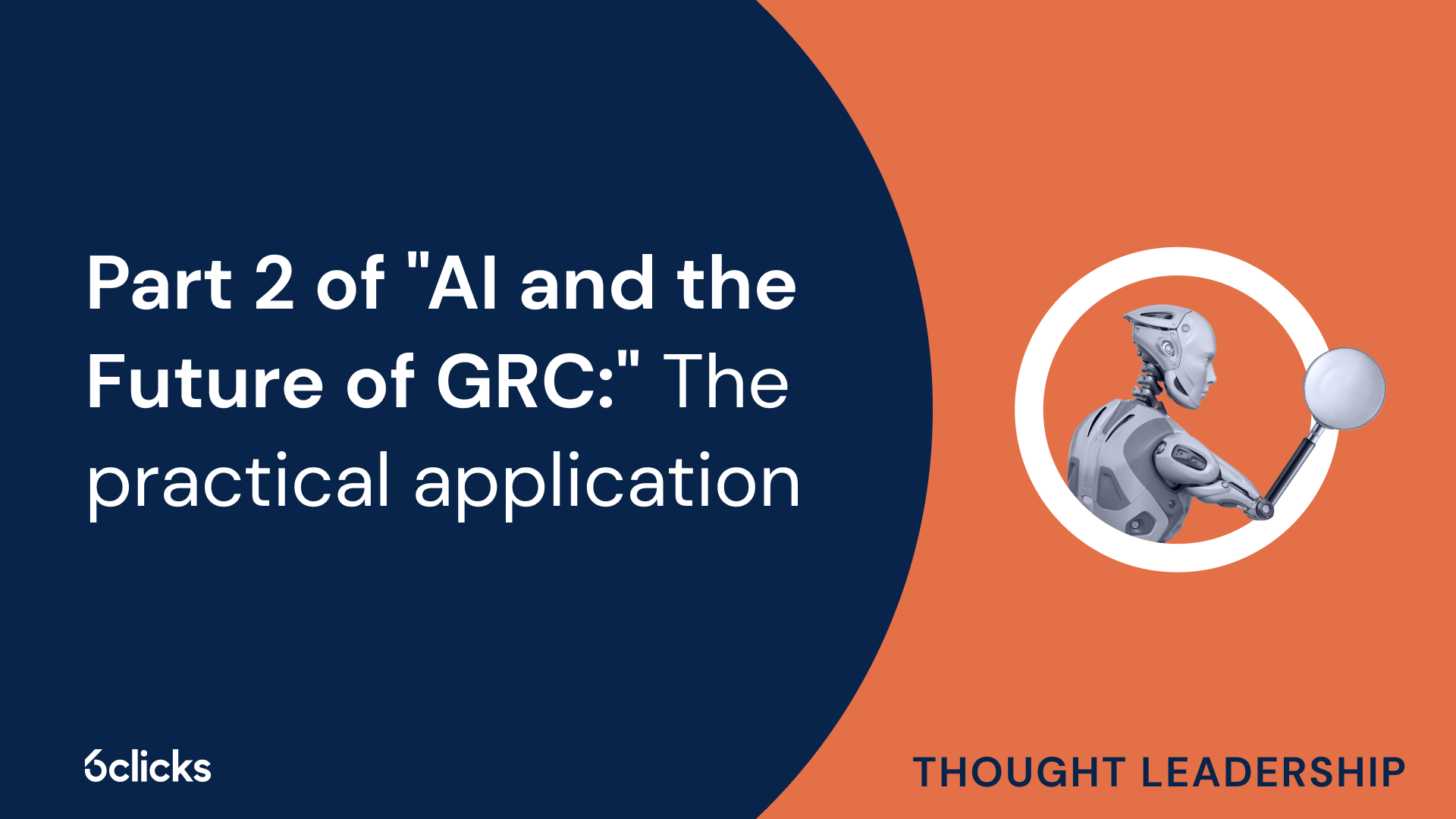
Artificial intelligence offers a world of advantages and possibilities in the realm of GRC. From streamlining high-effort activities, such as analyzing massive amounts of data and content, to providing actionable insights to drive effective decision-making, the ways in which AI can optimize various GRC processes cannot be overlooked by businesses. This is what the second part of my book, "AI and the Future of GRC" is all about, and today I will take you through each of the corresponding chapters to shed light on the role of AI in improving governance, managing risk, and maintaining compliance.
Part 2: The practical application
While the first part of the book explores the theoretical impact of AI in GRC, we now shift our focus to the broad uses of AI across the different domains of GRC in real-world settings. We discuss the nuances of each domain extensively, highlighting problems, recommending solutions, and providing concrete steps on how organizations can integrate AI into their processes. We also provide an in-depth analysis of case studies that demonstrate successful AI implementations for each domain. We then conclude each chapter with insightful questions for organizations to reflect on their current practices. Here are the sections that make up part 2 of the book:

Enterprise risk management
The first domain we dive into is Enterprise Risk Management (ERM). We start the chapter with the 4 levels of ERM maturity, tracing the progression from the traditional stage characterized by manual and process-driven methods to embracing more dynamic, predictive, and enhanced approaches using AI technologies.
We then identify problems in ERM such as the resource-intensive and error-prone processes of risk identification and future scenario planning. In response, we propose AI-powered solutions, including automating the analysis of risk data as well as market trends, economic indicators, and operational metrics to streamline the risk identification process and develop realistic risk scenarios. This provides organizations with benefits such as dynamic scenario modeling and tailored and predictive analysis that result in more targeted insights, paving the way for proactive risk management.
As an example, we recount how a mid-sized automotive parts manufacturer implemented an AI-driven scenario planning system that enabled them to foresee and prepare for potential future risks and make informed decisions.
Vendor risk management
Managing vendor relationships is a component of GRC that has also undergone several changes over the years.
Today, organizations face problems in the vendor risk assessment lifecycle, including inefficient manual processes and fragmented and unstructured data. AI solves these problems by automating the creation, distribution, analysis, and responses to vendor assessments and integrating information from existing databases and systems to ensure the accuracy and organization of data. This allows organizations to improve the efficiency of their entire vendor assessment process and leverage more accurate, comprehensive, and consistent insights.
We reference the successful implementation of this by a multinational corporation with a complex vendor ecosystem. Using advanced AI algorithms, they were able to perform in-depth comparisons between assessments and transform their vendor assessment reviews.
Audits and assessments
From paper-based processes to real-time and predictive data analysis, the way organizations conduct audits and assessments has evolved significantly.
However, organizations still struggle with problems in data collection and analysis, reviewing and responding to audits and assessments, monitoring, reporting, and documentation. AI offers practical solutions to each of these problems, including the use of natural language processing to sort through and analyze unstructured data, harnessing historical data to instantly populate assessment responses, automating the identification of areas of non-compliance, continuous monitoring, and customized report generation. As a result, organizations can accelerate audits and assessments and benefit from more meaningful insights, enabling them to implement corrective actions and ensure compliance.
Compliance and control management
In its initial stages, compliance and control management involved relying on reactive measures. Soon, through the introduction of digital tools and integration of advanced software solutions, organizations started adopting a holistic and proactive approach to compliance and control management.
Monitoring changes in regulatory requirements, implementing and evaluating controls, analyzing control and compliance scenarios, and reporting compliance are the major challenges that organizations are currently dealing with. AI addresses these problems through solutions such as real-time tracking of regulatory updates, automated control testing and monitoring for anomalies, advanced predictive analytics for scenario evaluation, and automated aggregation and intelligent analysis of data. This allows organizations to ensure the effectiveness of controls, boost compliance with dynamic regulations, and enhance decision-making based on data-driven insights.
The embedded digital assistant
Beyond the domains of GRC, we also uncover another area where AI can make substantial progress: the modern GRC software. AI assistants that can be accessed and used through chat-style interfaces can transform how risk and compliance professionals interact with and derive value from GRC systems.
These intelligent assistants can preserve context and improve the quality of conversations, reference data and guide users through different actions and modules within a system, present information in a concise and comprehensible manner, and promote education and training on internal policies and procedures, fostering a culture of risk awareness, security preparedness, and compliance across the organization. AI chat interfaces can also be integrated with popular messaging apps, embedded in self-service forms, and set up in work devices to increase engagement.
And that concludes the second part of the book. The third and final part of "AI and the Future of GRC" will delve into the next steps that organizations can take to navigate the ethical and regulatory implications of adopting AI technologies and maximize growth.

Find out what the last few chapters entail
Get your copy to experience the entirety of "AI and the Future of GRC," available now on Amazon and Amazon Kindle! Order the book here.

